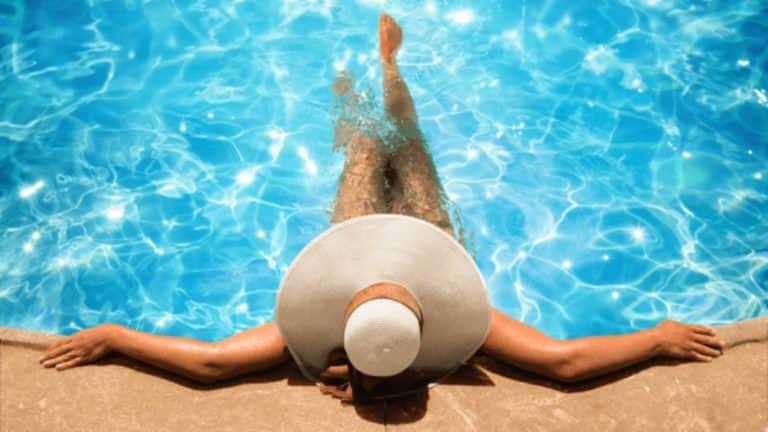How Much Sun Is Too Much Sun?

It is common knowledge that too much sun exposure is bad for your skin. Most people also know that we need sunlight to make vitamin D, a micronutrient that aids bone growth and absorption of calcium, controls cell growth, regulates immunity, and helps prevent inflammation. Unfortunately, it can be tricky balance between getting the sunshine we need to produce adequate vitamin D and risking overexposure and skin cancer.
How Long Should You Stay In the Sun?
The recommended length of time in the sun depends on several factors, including time of day, geographical location, and the type of skin you have.
The higher in the sky the sun is, the stronger the ultraviolet B (UVB) rays that brown the skin and cause it to look older. The sun is highest at midday.
UV radiation is higher close to the equator in locations such as Florida, Central America, and Thailand.
The thinner the ozone layer, the stronger UV radiation levels are. UV exposure is greater in Australia and New Zealand, near the hole in the ozone layer above Antarctica.
UVB exposure is more of a problem in high-altitude, mountainous regions.
Water, snow, and light-colored sand reflect UV light, increasing exposure.
How Much Sun Exposure Can Your Skin Handle?
The more sensitive to light your skin is, the shorter the time in which it can protect itself from UV radiation. The following is a table of skin types, and the maximum time for each that should be spent in the sun, taken from an article published by the National Center for Biotechnology Information (NCBI):
Skin Type I: Very light skin, reddish or strawberry blond hair, blue or gray eyes, skin that does not tan but often freckles. Maximum time in the sun — 10 minutes.
Skin Type II: Light skin (often with freckles), blond or brown hair, all eye colors, skin that tans barely or moderately. Maximum sun exposure — 20 minutes.
Skin Type III: Light or light brown skin (rarely with freckles), gray or brown eyes, dark blond or brown hair, skin that tans easily and burns within half an hour. Maximum time in the sun – 30 minutes.
Skin Type IV: Light brown or olive skin without freckles, brown or dark brown eyes, dark brown hair, skin that tans deeply and burns within 50 minutes. Maximum time in the sun – 50 minutes.
Skin Type V: Dark brown skin, dark brown or black hair, dark brown eyes, skin that takes more than an hour to burn in the sun and does not become darker. Maximum sun exposure – more than 60 minutes.
Skin Type VI: Black or dark brown skin, black hair, dark brown eyes, skin that does not become darker and takes more than an hour to burn in the sun. Maximum time in the sun – more than 60 minutes.
Do You Have The Right Health Insurance?
Both overexposure and underexposure to the sun can cause health problems. Too much sun can hasten the signs of aging and increase the risk for skin cancer. Not enough sun can result in vitamin D deficiency, which may be linked to a number of health problems, including diabetes, cancer, high blood pressure, and autoimmune disorders.
If you suffer from any health conditions, it is important to receive the care you need. Our agency will be happy to review your health insurance policy to help ensure you have the coverage you need.







